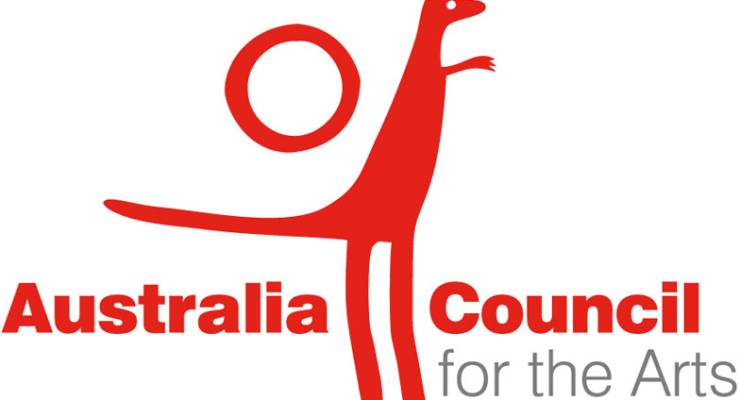
As Crikey has reported, the result of the funding raid on the Australia Council has been real pain at the smaller end of culture, with 65 small- to medium-sized companies defunded in the council’s latest round of organisational funding, and more cuts to come for individual artists.
One of the most concerning aspects of the Australia Council funding cuts is the way they have punished organisations speaking up for ordinary artists. The four-year round defunded five of the so-called “service organisations” that represent individual art forms: Ausdance, Music Australia, Regional Arts Australia, the Australian Society of Authors and the National Association for the Visual Arts (NAVA).
These are the organisations that represent and campaign on behalf ordinary artists working at the grassroots: dancers and choreographers, musicians and composers, writers and authors, visual artists and curators, respectively.
According to the National Association for the Visual Arts’ Tamara Winikoff, “the peak art form service organisations, what they represent is the whole of an art form — every single practitioner in that art form: an artist, a curator, an art writer, a conservator, an educator, we represent all of those people.”
“We act as a voice on [artists’] behalf, speaking about the issues they’re concerned about and changing the environment within which they work, in order for them to have sustainable careers,” Winikoff told Crikey. “So for us to be summarily defunded, it means there’s a lack of commitment to the sustainability of our industry.”
Music Australia’s CEO Chris Bowen agrees. The peak body for the music sector has a distinguished history arguing for the health of music in all its forms, led by legendary former head Richard Letts. And yet Music Australia was also defunded in the latest round.
“One of our constant issues is that the Australia Council model focuses on feeding supply: for instance, you’ll find nowhere in the Australia Council’s strategic plan any mention of growing the sector,” Bowen told Crikey. “They talk about diversifying, they’re not talking about increasing the size of the sector.”
Crikey has spoken to four different arts administrators in the sector. They say that the reason the service organisations missed out was that the Australia Council changed the funding criteria amidst the chaos of the Brandis funding cuts in 2015.
But the Australia Council denies this.
An OzCo spokesperson told us that “service organisations did not have a separate category under the Six Year program and would always have had to apply competitively with the other organisations applying”.
“There were many more excellent applications than we are able to fund with a reduced budget.”
That’s not what many in the industry believe. Going into the ill-fated six-year funding round scheduled for 2015, Crikey had been told that the service organisations were going to be assessed on different criteria to the bulk of the smaller cultural companies, whose role is to create and produce art. This makes sense: the service organisations have a different role, and do different things, to producing companies. Assessing peak bodies against the same criteria as galleries, theatres and dance companies generally spells trouble, as the peak bodies are producing art.
But after George Brandis cut $105 million from the Australia Council in the 2015 budget to create his “Excellence” fund, the Australia Council threw out the entire six-year funding process and started again with a four-year round. In the disorder of that transition, the separate criteria for service organisations were forgotten. As a result, the service organisations appear to have scored poorly when judged on criteria manifestly weighted against them.
“Music Australia welcomes new entrants, and we welcome renewal,” Music Australia’s Bowen told Crikey, but he questioned whether the Australia Council’s four-year grants got the balance right. Bowen thought that the lack of “a transparent mechanism to ensure you’ve got a good balance of investments accords the art forms, across the jurisdictions and across the development of practice, is a bit problematic”.
The defunding of the service organisations doesn’t make a lot of sense from a cultural or administrative perspective, but it’s even stranger politically. Bodies like NAVA, Ausdance, Music Australia and the Society of Authors have been far more vocal in their defence of the Australia Council than the agency’s own management and board. Tamara Winikoff in particular has been one of the leaders of the Free the Arts campaign, and a noisy critic of the Coalition’s arts funding cuts.
The Australia Council maintains that it is still supporting a number of organisations that provide services to artists. “We acknowledge the importance of service organisations to the arts, both those funded by us and those not,” the Australia Council’s spokesperson told us. “The four-year application process highlighted a significant shift in how service is being delivered to the sector with many more organisations undertaking this as part of their work. We will continue to evaluate and monitor service requirements across the sector as a whole.”
It’s a fascinating time for cultural policy, with a national arts debate happening tomorrow at Melbourne’s Wheeler Centre. Mark Dreyfus and Adam Bandt have policies to spruik, while Mitch Fifield does not. Crikey will be there to cover it.








The termination of funding to 62 organisations was not a result of the government funding cuts, but of new Australia Council procedures. The funding cuts will cause problems but not THIS problem.
There were separate, appropriate guidelines for funding service organisations. Under one size fits all, they disappeared.
The artist peers who assess applicants are chosen for their artistic skills. Ausdance does not do plies nor does NAVA paint. They have to be assessed on their effectiveness in achieving their purpose, which is not to produce art but to provide services to artists and advocate for the artform, and similar. So Music Australia and others lost out to Victorian Opera and others.
Whether to fund supply or demand may be an issue but it is not relevant to this issue. The service organisations are supply organisations.
The solution is 1) to agree to fund service organisations; 2) if that is agreed, to make the funding decisions on relevant criteria.
Another article by Ben that falls short and is less than rigorous. As Richard Letts points out the organisations here are not producers and as many know when your applying for grants (like employment) there is a criterion against which your application is assessed supposedly by our Piers! I am sure the Piers have No Say in what is cut. I get fed up with the same old lame BS that is trundled out ‘we receive more applications than we are able to fund etc etc. As far as Tamara Winikoff being a vocal critic of Government funding and “free the arts campaign” she and the campaign have been low flying and below the national arts radar. but to be fair the media have taken NO NOTICE. Perhaps the Conservative Connoisseur’s of the LNP are simply finishing off the Abbott plan through the usual mechanisms of intimidation and bullying so prevalent in a chauvinistic society. While all and sundry grimace at Shorten and his cohort of equally nasty union bullies stirring up the ‘Class war’ the LNP through the chop, slash and smash of free artistic expression are conjuring up the very same class divide. Turnbull in all his rhetoric of innovation and jobs has cut off his nose to spite his face with the defunding of the creative sector. What a hypocrite! Australia has been hoodwinked for the last 20 years by economic rationalism. Chopping OZco and the arts is such a good thing for the bean counters it helps shift the costs out from under the governments responsibility to the Philanthropic and private sector succeeding in governance by avoidance!
I’m guessing there is supposed to be more than two paragraphs to the article.
And yes, I am logged in.
Ah, works in Chrome, not FF45.